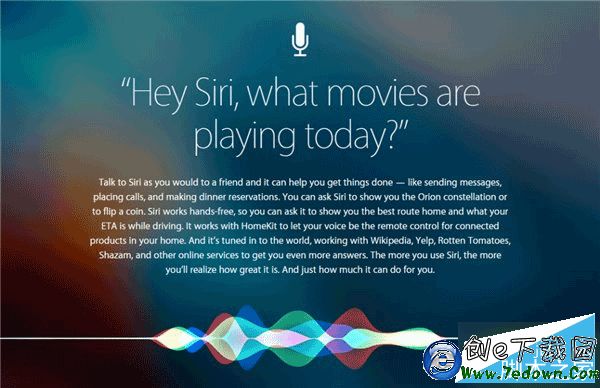ios技術面試題
1.Difference between shallow copy and deep copy?
淺復制 只拷貝地址 不拷貝地址指向的對象
深復制 拷貝地址 並且指向拷貝的新對象
2.What is advantage of categories? What is difference between implementing a category and inheritance?
categories: 在不影響或修改原來的類別或模組的情況下去修改原有的功能,增加新的功能
3.Difference between categories and extensions?
categories: 在不影響或修改原來的類別或模組的情況下去修改原有的功能,增加新的功能
4.Difference between protocol in objective c and interfaces in java?
暫時覺得它們是一樣的 protocol 可以被繼承 interfaces 不可以
在java 中的interfaces 在 objective-c 中就是 protocol
在java 中的 class 在 objective-c 中就是 interface
5.What are KVO and KVC?
一個對象擁有某些屬性。比如說,一個 Person 對象有一個 name 和一個 address 屬性。以 KVC 說法,Person 對象分別有一個 value 對應他的 name 和 address 的 key。 key 只是一個字符串,它對應的值可以是任意類型的對象。從最基礎的層次上看,KVC 有兩個方法:一個是設置 key 的值,另一個是獲取 key 的值。如下面的例子:
voidchangeName(Person*p,NSString*newName)
{
//usingtheKVCaccessor(getter)method
NSString*originalName=[pvalueForKey:@"name"];
//usingtheKVCaccessor(setter)method.
[psetValue:newNameforKey:@"name"];
NSLog(@"Changed%@'snameto:%@",originalName,newName);
}
現在,如果 Person 有另外一個 key 配偶(spouse),spouse 的 key 值是另一個 Person 對象,用 KVC 可以這樣寫:
voidlogMarriage(Person*p)
{
//justusingtheaccessoragain,sameasexampleabove
NSString*personsName=[pvalueForKey:@"name"];
//thislineisdifferent,becauseitisusing
//a"keypath"insteadofanormal"key"
NSString*spousesName=[pvalueForKeyPath:@"spouse.name"];
NSLog(@"%@ishappilymarriedto%@",personsName,spousesName);
}
Key-Value Observing (KVO) 建立在 KVC 之上,它能夠觀察一個對象的 KVC key path 值的變化。舉個例子,用代碼觀察一個 person 對象的 address 變化,以下是實現的三個方法:
- watchPersonForChangeOfAddress: 實現觀察
- observeValueForKeyPath:ofObject:change:context: 在被觀察的 key path 的值變化時調用。
- dealloc 停止觀察static NSString *const KVO_CONTEXT_ADDRESS_CHANGED = @"KVO_CONTEXT_ADDRESS_CHANGED"
@implementationPersonWatcher
-(void)watchPersonForChangeOfAddress:(Person*)p
{
//thisbeginstheobserving
[paddObserver:self
forKeyPath:@"address"
options:0
context:KVO_CONTEXT_ADDRESS_CHANGED];
//keeparecordofallthepeoplebeingobserved,
//becauseweneedtostopobservingthemindealloc
[m_observedPeopleaddObject:p];
}
//wheneveranobservedkeypathchanges,thismethodwillbecalled
-(void)observeValueForKeyPath:(NSString*)keyPath
ofObject:(id)object
change:(NSDictionary*)change
context:(void*)context
{
//usethecontexttomakesurethisisachangeintheaddress,
//becausewemayalsobeobservingotherthings
if(context==KVO_CONTEXT_ADDRESS_CHANGED){
NSString*name=[objectvalueForKey:@"name"];
NSString*address=[objectvalueForKey:@"address"];
NSLog(@"%@hasanewaddress:%@",name,address);
}
}
-(void)dealloc;
{
//muststopobservingeverythingbeforethisobjectis
//deallocated,otherwiseitwillcausecrashes
for(Person*pinm_observedPeople){
[premoveObserver:selfforKeyPath:@"address"];
}
[m_observedPeoplerelease];
m_observedPeople=nil;
[superdealloc];
}
-(id)init;
{
if(self=[superinit]){
m_observedPeople=[NSMutableArraynew];
}
returnself;
}
@end
這就是 KVO 的作用,它通過 key path 觀察對象的值,當值發生變化的時候會收到通知。
6.What is purpose of delegates?
7.What are mutable and immutable types in Objective C?
8.When we call objective c is runtime language what does it mean?
9.what is difference between NSNotification and protocol?
10.What is push notification?
11.Polymorphism?
12.Singleton?
單例
13.What is responder chain?
14.Difference between frame and bounds?
15.Difference between method and selector?
16.Is there any garbage collection mechanism in Objective C.?
17.NSOperation queue?
18.What is lazy loading?
19.Can we use two tableview controllers on one viewcontroller?
20.Can we use one tableview with two different datasources? How you will achieve this?
21.What is advantage of using RESTful webservices?
22.When to use NSMutableArray and when to use NSArray?
23.What is the difference between REST and SOAP?
24.Give us example of what are delegate methods and what are data source methods of uitableview.
25.How many autorelease you can create in your application? Is there any limit?
26.If we don’t create any autorelease pool in our application then is there any autorelease pool already provided to us?
27.When you will create an autorelease pool in your application?
28.When retain count increase?
29.Difference between copy and assign in objective c?
30.What are commonly used NSObject class methods?
31.What is convenience constructor?
32.How to design universal application in Xcode?
33.What is keyword atomic in Objective C?
34.What are UIView animations?
35.How can you store data in iPhone applications?
36.What is coredata?
37.What is NSManagedObject model?
38.What is NSManagedobjectContext?
39.What is predicate?
40.What kind of persistence store we can use with coredata?




